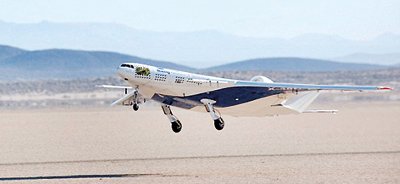Sunday Times 2
Can ‘Humble experiments’ at Nasa finally break the speed of light?
As we take steps into space, there is one thing that could always put a cap on our ambitions.Despite our desire to explore the stars, we are limited by travelling at less than light speed – and even if we managed to match that pace, we would still be listing our voyages from star to star in years, centuries or millenia.
But, in what could be a huge breakthrough, theorists from Nasa say there is ‘hope’ that we can achieve faster-than-light travel, after physicists found a theoretical possibility for warp speed travel.While nothing can break the speed of light, scientists have long considered the fantasy of warp speed travel, where spaceships could bend space and time on itself to move through loopholes in space.
Equations based on the laws of relativity have allowed warp speed in theory: but the energy required to make it happen would require the energy-mass of a Jupiter-sized planet.Mexican physicist Miguel Alcubierre’s theories are the most practical, mooting a ring around a sphere-shaped spaceship, which would contract space in front of the ship, and expand space behind it.
This would allow faster-than-light travel – if astrophysicists could harness planet-sized energy or sip power from a supernova.
But according to Space.com, Harold ‘Sonny’ White, from NASA’s Johnson Space Center, told the 100 Year Starship Symposium, a gathering of scientists, writers and philosophers in Houston, that new theories could allow Man to reach such speeds with less energy.
He told his audience that, instead of enclosing a space-ship in a space time-bubble, a craft could sit within a ‘doughnut’ shape – which means the warp drive could be powered by a mass the size of a spacecraft like the Voyager 1 probe – the equivalent size of a small car.
He told Space.com: ”The findings I presented today change it from impractical to plausible and worth further investigation.
‘The additional energy reduction realized by oscillating the bubble intensity is an interesting conjecture that we will enjoy looking at in the lab.’
White and his team are experimenting with a mini-version of a warp drive in their laboratory, using laser to try to warp space and time in miniature.
He said his ‘humble experiment’ was ‘trying to see if we can generate a very tiny instance of this in a tabletop experiment, to try to perturb space-time by one part in 10 million.’
© Daily Mail, London
Follow @timesonlinelk
comments powered by Disqus
























